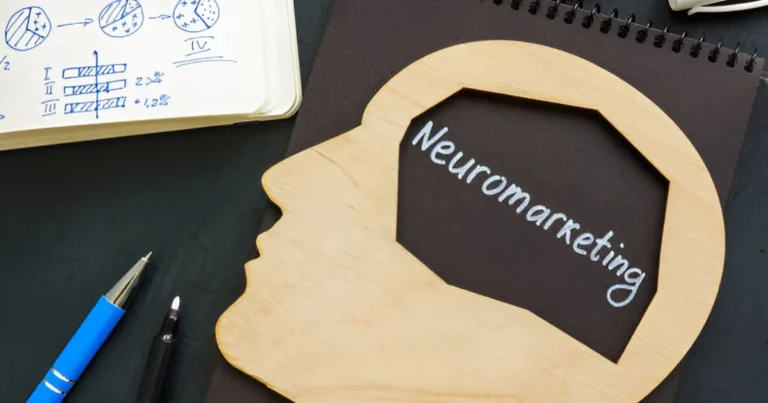The Hypocrite’s memory: unveiling the science of acting and recall
Imagine yourself standing on a stage, illuminated by dozens of spotlights, facing an audience hanging on your every word, keenly attuned to even the slightest misstep. And yet, each line, each phrase flows effortlessly from your lips, as if it were etched into your mind.
How do theater actors manage to memorize entire pages of dialogue while maintaining emotional authenticity? The process goes far beyond mechanical repetition. It is a delicate interplay of cognitive techniques, emotional strategies, and a profound understanding of the text. Let’s uncover the secrets of actors and explore how the Hypocrite’s memory intertwine with the art of drama.
Theater’s greatest tool: How memory has defined the stage
Theater is one of humanity’s oldest art forms, tracing back to the rituals and ceremonies of ancient civilizations. In ancient Greece, it was both a form of entertainment and a vehicle for moral education, with tragedies and comedies addressing universal themes. The actors, then called hypocrites (from the Greek hypokritḗs), originally meaning “responder” or “interpreter,” were tasked with conveying these stories through long and complex dialogues. At the time, the term carried no negative connotation, it simply referred to someone playing a role, embodying different characters on stage. Without written scripts like those we have today, memory was their most vital tool.
During the Middle Ages, actors in mystery plays and farces performed religious narratives or satirical pieces in local languages. They trained themselves to recite texts often transmitted orally, enhancing their ability to retain vast amounts of information. With the rise of the Renaissance, the works of playwrights like Shakespeare and Molière demanded incredible precision, as their dialogues were rich in subtlety and rhythm.
Modern theater continues to build on this tradition, though the methods have evolved. Actors have become true mental athletes, combining ancient techniques with contemporary tools to bring texts to life. Yet, memory remains at the core of their craft, an essential skill for honoring the playwright’s work and captivating the audience.
The science behind theatrical memory
If memory forms the foundation of theatrical performance, it is far from a mere rote-learning exercise. Actors adopt a far more nuanced and sophisticated approach, blending artistic intuition with cognitive strategies. Each method, whether based on emotion, visual association, or context, results from meticulous training, often tailored to the specific demands of the play and the actor’s personal style. Let’s explore the diverse techniques that enable performers to memorize their lines while preserving a vibrant and authentic interpretation.
Living the lines: How actors memorize through movement
Actors do not merely recite their lines, they live them. Each rehearsal becomes an exercise in improvisation, where emotions, tone, and gestures are constantly adjusted. This “active rehearsal” engages both the body and the brain, creating strong kinesthetic associations that reinforce memory. For instance, pairing a line with a specific movement, such as extending a hand or shifting position on stage, transforms physical actions into contextual cues that aid recall.
From a neuroscientific perspective, this method engages kinesthetic memory by linking the motor cortex with regions associated with episodic memory, thereby strengthening retention while adding a dynamic dimension to performance.
Breaking down the script: the science of theatrical chunking
Rather than memorizing word for word, actors break down their script into beats, a term in theater referring to units of action or emotion that mark shifts in a scene’s dynamics. Each beat represents a distinct phase in the character’s emotional journey or dialogue.
This strategy reduces cognitive load by organizing information into meaningful chunks, leveraging the cognitive process known as “chunking.” In neuroscience, chunking is a natural mechanism where the brain groups isolated elements to lighten cognitive strain. For example, instead of memorizing a long sequence of numbers like 149217761945, we break it down into 1492, 1776, 1945. These segments become easier to remember because they align with familiar patterns or meaningful references.
In a dramatic scene, an actor might divide their lines into three sections: (1) expressing anger, (2) revealing vulnerability, and (3) seeking reconciliation. This approach fosters efficient, context-driven retention.
The memory palace method: A timeless trick for actors
Derived from ancient oratory techniques, the method of the memory palace involves visualizing a familiar location where each element of the text is linked to a striking mental image. Rooted in studies on spatial memory, this technique helps actors anchor abstract content to concrete visual cues, thereby enhancing recall through a clear mental structure.
For instance, to memorize a complex monologue, an actor might associate each line with a different part of an imaginary house: one phrase with a lamp in the living room, another with a book on a shelf.
Feeling to remember: How emotion strengthens recall
Emotions play a pivotal role in memory retention, as they activate the amygdala, a key brain region that enhances the consolidation of significant memories. By linking each line to a strong emotion, actors increase the vividness and durability of their recollection, transforming abstract words into tangible experiences.
A dramatic line, for example, might be learned by amplifying the associated emotion, crying or shouting, to embed it more deeply. Neuroscientific research confirms that emotionally charged memories are reinforced by the amygdala, making them easier to retrieve.
Scene partners: Contextual cues for memory
Actors rely on their co-performers’ lines as powerful memory triggers, drawing on contextual memory, the ability to associate a memory with surrounding elements. By actively listening to their scene partners, actors anchor themselves in the interaction, ensuring a fluid and natural recall of dialogues.
For example, an actor may know their next line always follows a particular cue from their partner, such as a question or an exclamation. This technique strengthens memory by embedding lines within a dynamic, interactive framework.
Visualizing the script: how mental images enhance recall
Actors use vivid mental imagery, whether concrete (an object or location) or abstract (a visual metaphor), to reinforce memory. This process stimulates brain regions associated with visualization, transforming verbal information into striking, memorable representations.
For instance, an actor might imagine a majestic lion wearing a golden crown and roaring in a grand hall to memorize a line related to power or royalty. This technique capitalizes on the brain’s capacity to retain dramatic and unusual images, strengthening recall.
Echoes of the stage: How actors use rhythm to remember
Some texts, particularly those in verse, possess a natural rhythmic structure that aids memorization. Actors harness this musicality to anchor their lines, as rhythm engages brain regions involved in auditory processing and memory, such as the prefrontal cortex and auditory circuits.
This synchronization facilitates recall by reinforcing connections between episodic memory and working memory. The alexandrines of Racine or Corneille, for example, are often approached like songs, with each line carrying a distinct melodic echo.
Training under pressure: How stress enhances memory
Actors sometimes rehearse their lines under unusual conditions, such as while running or performing physical tasks. This type of training taps into adaptive stress, which activates the sympathetic nervous system and releases hormones like adrenaline and cortisol. Though often linked to stress, these hormones can temporarily heighten alertness and enhance memory consolidation by stimulating the hippocampus, a critical region for memory.
Reciting a scene while jumping rope, for example, reinforces memory under pressure, simulating the constraints of a live performance. This controlled stress training improves both recall and cognitive resilience.
Theater actors are far more than mere reciters of text, they are true memory artisans. Through a refined blend of ancient and modern techniques, emotional depth, and disciplined practice, they elevate mere words into living, breathing performances.
Whether you are an actor or simply curious about the potential of your own memory, these strategies offer valuable insights into the untapped capabilities of the human mind.
References
Baddeley, A. D. (2000). The episodic buffer: A new component of working memory? Trends in Cognitive Sciences, 4(11), 417–423.
Ericsson, K. A., & Kintsch, W. (1995). Long-term working memory. Psychological Review, 102(2), 211–245.
McGaugh, J. L. (2000). Memory—a century of consolidation. Science, 287(5451), 248–251.
Tulving, E. (1983). Elements of episodic memory. Oxford: Clarendon Press.
Yonelinas, A. P. (2002). The nature of recollection and familiarity: A review of 30 years of research. Journal of Memory and Language, 46(3), 441–517.
Schacter, D. L., & Addis, D. R. (2007). Constructive memory: The ghosts of past and future. Nature, 445(7123), 27.
LeDoux, J. (2000). Emotion circuits in the brain. Annual Review of Neuroscience, 23(1), 155–184.
Television Director
Master’s Degree in Directing, École Supérieure de l’Audiovisuel (ESAV), University of Toulouse
Bachelor’s Degree in History, Hassan II University, Casablanca
DEUG in Philosophy, Hassan II University, Casablanca







